THE GOYA BLACK PAINTINGS
The Black Paintings is a series of fourteen paintings, executed by Goya in the wake of the Liberal’s January victory of 1820 that resulted in King Ferdinand VII accepting the Liberal’s Constitution. These paintings, usually dark in tone and in theme, were originally murals painted on the walls of two rooms in Goya’s country home called the Quinta del Sordo, or “Deaf Man’s Villa.” According to the inventory of Antonio Brugada, there were several murals on the ground floor and eight on the first floor, meaning there is at least one painting missing that might be in a private collection. The murals were originally painted over existing murals in the villa – Goya even making use of an existing landscape in Fight with Cudgels. The in-situ locations of the murals are somewhat preserved in Jean Laurant’s photographic inventory of 1874, the same year the task of restoring and transferring the murals began. They are now displayed attached to canvas at the Prado Museum in Madrid.
Art historian Juan José Junquera has recently published a report expressing certainty that the so-called Black Paintings could have been in no way painted by Goya.
Quinta del Sordo was bequeathed to Goya’s grandson Mariano Goya y Goicoechea in 1823 as the return of King Ferdinand VII and the Inquisition loomed. An inventory made in 1830, on the occasion of Mariano’s marriage, makes no mention of the existence of a second floor of the residence. The second story might have been planned by Goya but executed only after his death. Mariano’s financial difficulties induced the sale of the home in 1859 and, perhaps in an effort to increase the ease and profitability of the sale, Junquera deduces that Mariano assured the buyer that the painted decorations were by the hand of his grandfather, Goya. Junquera also points to the works’ stylistic continuities as cause for suspicion, insisting that the similarities are calculated and carefully placed by a talented copyist. Junquera expressed the hope that future technical testing will lend more clarity as to the authorship of these famed works.

Witches' Sabbath (El Gran Cabrón/Aquelarre)
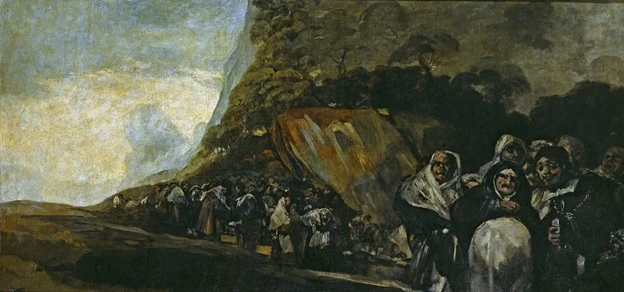
Procession Of The Holy Office (Peregrinación A La Fuente De San Isidro/Procesión Del Santo Oficio)
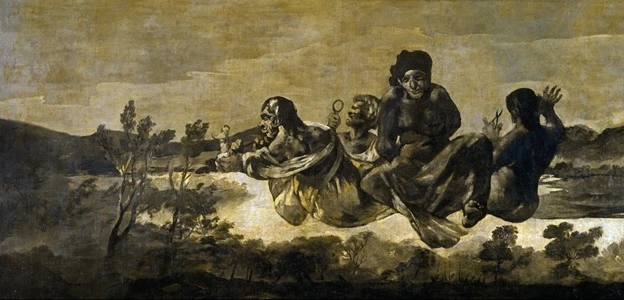
The Fates (Atropos)
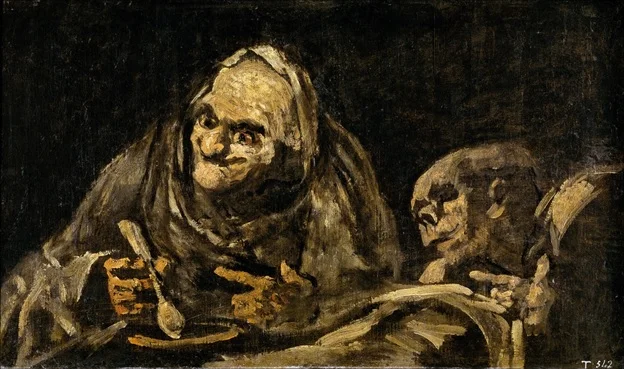
Two Old Men Eating Soup (Dos Viejos Comiendo Sopa)
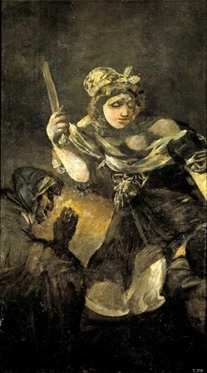
Judith And Holofernes (Judith Y Holofernes)

Two Old Men (Dos Monjes)

La Romería De San Isidro
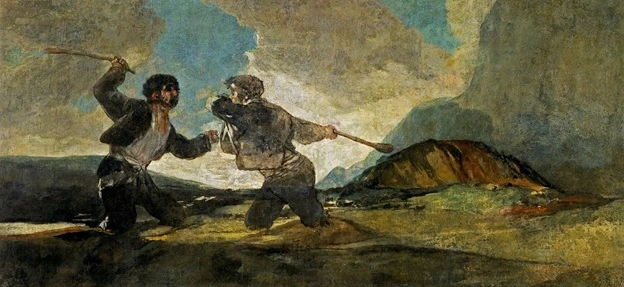
Fight With Cudgels (Riña A Garrotazos Or Duelo A Garrotazos)
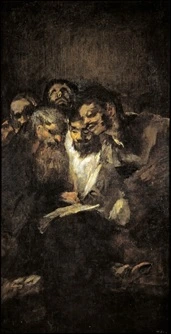
Hombres Leyendo (La Lectura)

Women Laughing (Dos Mujeres Y Un Hombre)
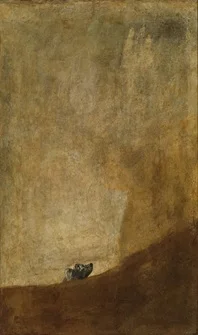
The Dog

Saturn Devouring His Son (Saturno Devorando A Su Hijo)
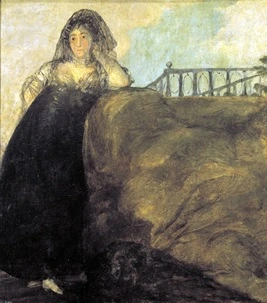
La Leocadia (Una Manola: Doña Leocadia Zorrilla)

Asmodea Or Fantastic Vision (Visión Fantástica)